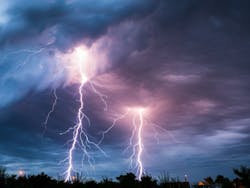Maryland today made $5 million available for resiliency hub microgrids — public places with electricity during power outages within low-to-moderate income neighborhoods.
The Maryland Energy Administration (MEA) issued a competitive solicitation for the community microgrids. Applications are due March 1, 2019.
The state agency describes a resiliency hub as a place that can provide electricity and emergency heating and cooling that is free to the public. The community may use the space to keep medicines and milk for babies cool, charge cell phones or computers, or for emergency lighting.
“They would provide a nucleus of stability within the community during an extended grid outage. Of greatest importance, they will always be within walking distance of the community they serve,” says the application materials provided by MEA.
Unlike an emergency shelter, resiliency hubs need not be designed to withstand extreme weather; nor must they provide food service, showers or locker rooms. Their purpose is to provide access to electricity when the central grid is down.
The MEA requires that the resiliency hub microgrids use solar as their primary source of power to qualify for the funding. The microgrids may include other forms of generation and batteries, but no grant funds can be spent on that portion.
Both public and private microgrid developers may apply to defray part of the cost of building the microgrids. Projects can receive grants up to $2,000/kW, capped at $501,000 per project. Only resiliency hub microgrids over 10 kW qualify for the funding.
Microgrid owners may employ the batteries to derive revenue or reduce costs when they are not being used to for emergency power. They may, for example, use the batteries for peak load shifting or for bidding into the PJM frequency regulation market. However, the grant requires the battery be at least 90 percent charged coming up on a storm or other severe weather that might put the electrical grid at risk.
In ranking the applications, the MEA will consider the ratio of low-to-moderate income people served. Scoring also will be based on the services rendered (lighting, cell phone recharging capability, refrigeration), the likelihood of long-term support (such as city/county operational support), the proposal’s completeness and other factors.
“Expanding relief options for residents impacted by a power grid outage is a paramount health and safety issue,” said Mary Beth Tung, MEA director. “Having a building in the community with sustained electrical power can ensure at risk people are safe in overheated or freezing apartments, temperature sensitive medications are preserved, and communications are maintained.”
The MEA plans to execute contracts by April 1, 2019. The grant application and details are available on the agency’s resiliency hub page.
Track news about Marylands resiliency hub microgrids. Subcribe to the free Microgrid Knowledge newsletter.







